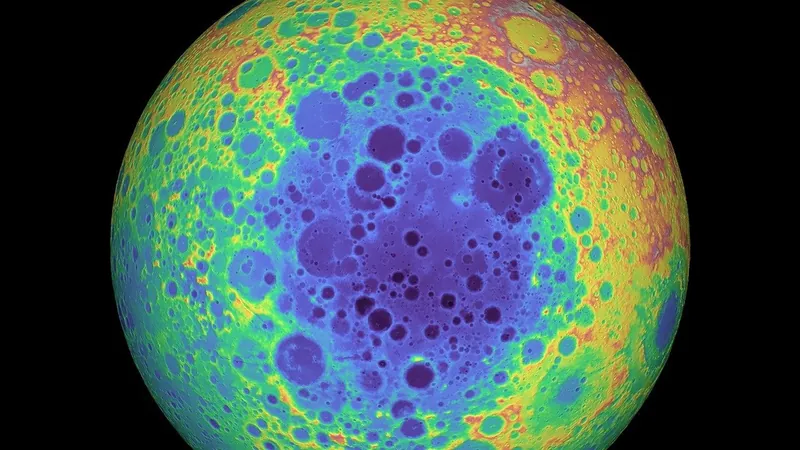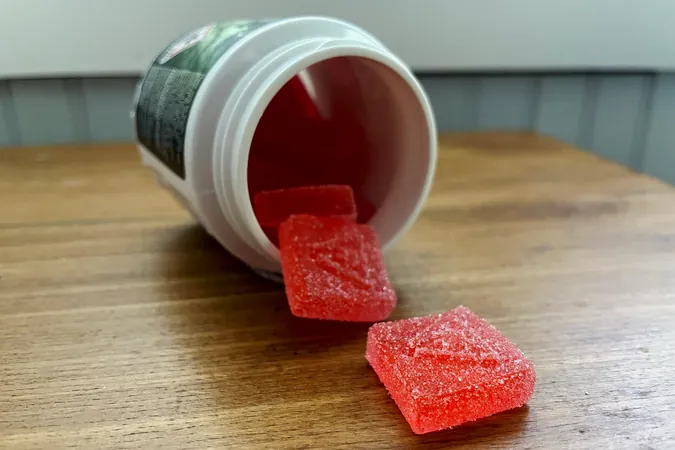
Unlocking the Moon's Secrets: Could a Giant Crater Reveal the Mysteries of Ancient Magma?
2025-05-05
Author: Ming
A Crater That Could Change Our Understanding of the Moon
A colossal impact crater on the Moon, known as the South Pole-Aitken (SPA) basin, may hide remnants of a primordial magma ocean and early pieces of the lunar mantle, according to researchers. With future Artemis missions poised to bring back samples, we could gain unprecedented insights into the final stages of lunar formation.
The Cataclysm That Created the SPA Basin
Around 4.3 billion years ago, a massive celestial object collided with the Moon, carving out the enormous South Pole-Aitken basin. The debris from this event provides a unique window into the lunar mantle as it was crystallizing, offering a snapshot of the Moon's tumultuous history.
Revolutionary Discoveries About Impact Dynamics
Jeff Andrews-Hanna, a planetary scientist at the University of Arizona, unveiled intriguing findings at the recent Lunar and Planetary Science Conference in Texas. He argued that the SPA impact created a thin layer of late-stage magma ocean, and he believes the Artemis missions will allow scientists to sample this significant material directly.
Illuminating the Impact's Directionality
The SPA basin's slightly elongated shape suggests it resulted from an oblique impact rather than a direct hit. Interestingly, the pool of material at its northern edge seems to match the missing crust, revealing more complexities about the nature of the impact. By comparing the SPA basin's shape to other elongated craters on the Moon, researchers determined the impactor was moving southward, providing fresh insights into impact dynamics.
Peering into the Moon's Distinct Layers
When the early solar system was forming, a Mars-sized object collided with the young Earth, eventually leading to the creation of both Earth and the Moon. During this chaotic period, molten mantle material began to crystallize, leading to the formation of the Moon's crust.
The Mystery of KREEP Elements
Key materials such as potassium, rare earth elements, and phosphorus, collectively known as KREEP, are believed to have concentrated in the lava instead of crystallizing. Earlier studies noted thorium consistent with KREEP impact melt at the basin's floor, but the search for mantle material to the north has been elusive.
Connecting the Dots: The SPA and KREEP Terrane Relationship
Further evaluations revealed that some ejecta from the SPA impact carried significant amounts of thorium, hinting that the slowly crystallizing magma ocean seeped out during the collision. This connection suggests the SPA impact may have played a role in the formation of the Procellarum KREEP Terrane on the near side of the Moon.
The Countdown to Artemis: A New Era of Exploration
The findings could revolutionize our understanding as astronauts prepare for the Artemis mission, slated for 2026. They will collect samples from the mantle, allowing comparisons with previously returned rocks from the KREEP region. This could illuminate the timing of the magma ocean's formation and provide crucial details about the Moon's geological development.
The Implications for Earth's Early History
Andrews-Hanna emphasized the importance of the SPA basin, stating that it is intricately linked to the story of Earth's formation. Once lunar samples are retrieved, scientists expect to establish a precise age for the magma ocean crystallization, unlocking key information about this vital stage of planetary evolution.


 Brasil (PT)
Brasil (PT)
 Canada (EN)
Canada (EN)
 Chile (ES)
Chile (ES)
 Česko (CS)
Česko (CS)
 대한민국 (KO)
대한민국 (KO)
 España (ES)
España (ES)
 France (FR)
France (FR)
 Hong Kong (EN)
Hong Kong (EN)
 Italia (IT)
Italia (IT)
 日本 (JA)
日本 (JA)
 Magyarország (HU)
Magyarország (HU)
 Norge (NO)
Norge (NO)
 Polska (PL)
Polska (PL)
 Schweiz (DE)
Schweiz (DE)
 Singapore (EN)
Singapore (EN)
 Sverige (SV)
Sverige (SV)
 Suomi (FI)
Suomi (FI)
 Türkiye (TR)
Türkiye (TR)
 الإمارات العربية المتحدة (AR)
الإمارات العربية المتحدة (AR)